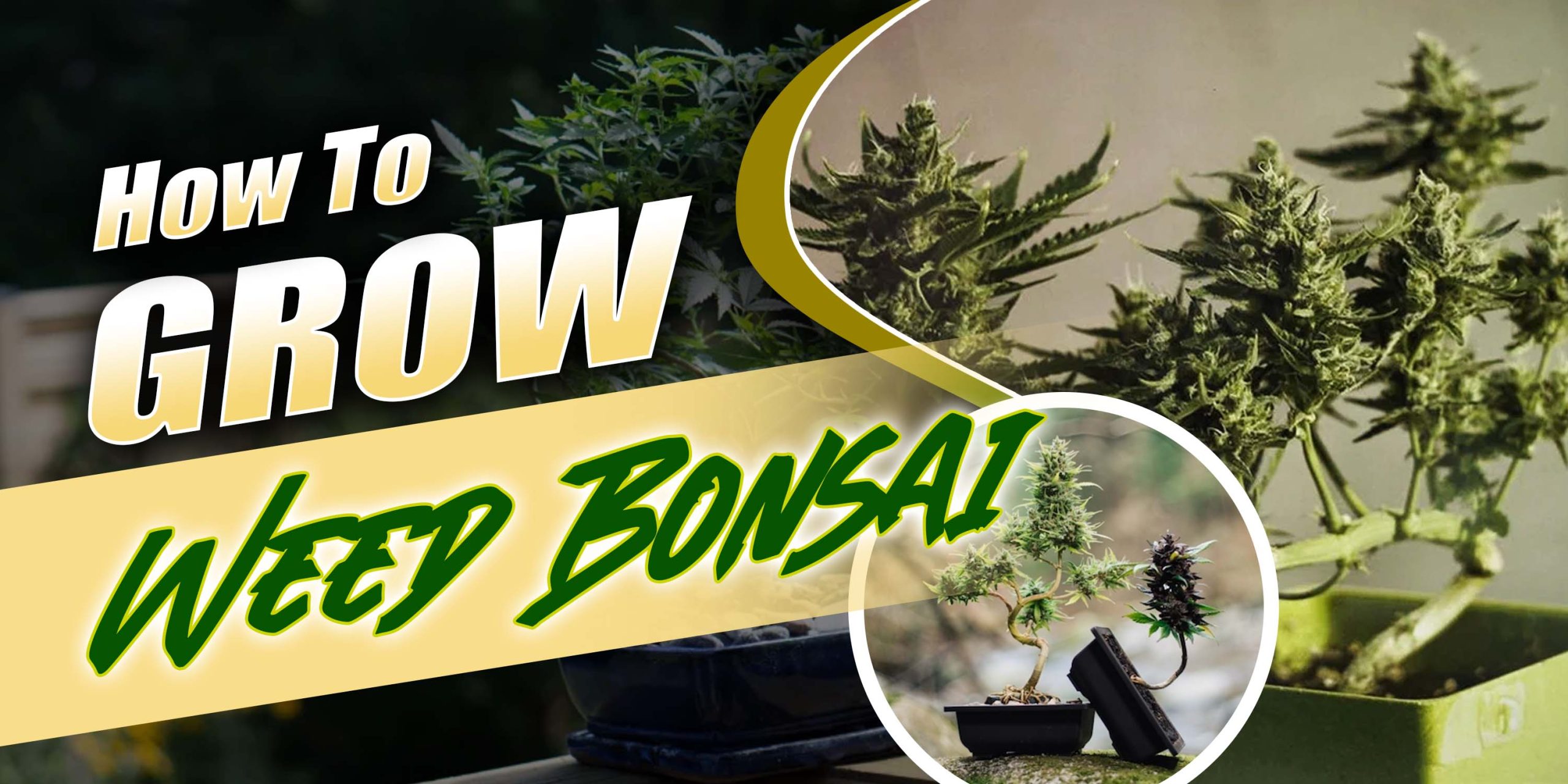Table of Contents
ToggleThere is a new kind of way to grow cannabis you know what it is? Yes, Weed Bonsai cultivation, exploring the details of cultivating cannabis bonsai trees reveals a refined artistry that goes beyond the usual methods. Growing bonsai cannabis planti isn’t just about the practical benefits; it’s also about respecting an ancient technique that’s been adapted to fit into today’s cannabis scene. Our goal is to give you growers a deep dive into the ins and outs of bonsai marijuana plant, providing them with clear insights to boost their understanding and mastery of bonsai cannabis plants craft.
What Is Bonsai?
Bonsai, rooted in the traditions of ancient China and Japan, transcends being merely miniature trees. It’s a holistic cultivation technique, emphasizing the creation of a healthy, mature, and authentic plant that retains a fraction of its natural size. The term itself, translated from Japanese, means “planted in container.” This reflects the core principle of restraining nutrient absorption and root development by confining trees to small containers, fostering a unique symbiosis between nature and meticulous cultivation.
Exploring the historical context enriches our appreciation for the enduring practice of bonsai cultivation. Originating over a millennium ago, this art form embodies patience, skill, and a profound understanding of horticulture. By understanding the roots of bonsai – both literally and figuratively – growers can better appreciate the tradition they are engaging with, adding a layer of cultural significance to their cannabis cultivation journey.
Advantages of Weed Bonsai Cultivation
The motivation behind growing bonsai weed trees extends beyond space efficiency. These miniature marvels offer a renewable source of clone clippings, presenting a sustainable solution for growers seeking a consistent supply of high-quality genetics. Particularly valuable in larger cannabis gardens, canna-bonsai mothers contribute to genetic diversity without the reliance on extensive seed cultivation. This not only saves space but also enhances the overall resilience and adaptability of the cannabis garden ecosystem.
Furthermore, the role of bonsai weed trees becomes even more pronounced in the context of limited space and few plants. The efficiency in space utilization is unmatched, making them an ideal choice for small-scale cultivation enthusiasts. However, the true potential of canna-bonsais emerges in larger gardens, where multiple mothers can provide an extensive variety of genetics. This strategic approach ensures a diverse and robust gene pool, contributing to the resilience of the entire cannabis garden against environmental and genetic challenges.
Steps for Bonsai Weed Growing
Step One: Preparing the Pot
The first thing in growing a cannabis bonsai is to carefully get the pot ready. Choosing a small pot is key because it sets up the whole growth journey. Some experienced growers go the extra mile by making holes around the pot’s edge. This isn’t just for show—it’s super helpful for training the plant and lets you use strings or twine to guide how it grows. The importance of this step isn’t just about getting things ready; it’s about planning ahead for the next stages of training and growth.
Step Two: Planting Your Cutting
Picking a cutting for the mother plant is a big deal because it directly affects how good the future clone clippings will be. The cutting has to be not just healthy but strong enough to handle lots of clippings throughout the year. Making this smart choice ensures you’ll have a steady supply of top-notch buds. Now, adding a wooden stake to guide the main stem might seem small, but it’s a really important part of this step. That stake becomes like a coach, helping growers shape the bonsai trunk the way they want without messing up the roots.
Step Three: Train The Bonsai
Training the branches of a canna-bonsai is like an art form. Using twine to gently guide the branches where you want them needs a gentle touch and knowing how the plant likes to grow. The force you use when tying the branches decides if they’ll go sideways or up and down. This careful way of doing things isn’t just about making the bonsai look good; it also affects how healthy and lively the plant is. Making sure there’s enough space for the plant to grow without getting squeezed is a big deal. It’s like finding the right balance between keeping things in check and letting nature do its thing.
Step Four: Trimming and Pruning
As the cannabis bonsai grows up, trimming becomes a really important part of keeping its special look and size. The main focus is on controlling those smaller branches instead of the big ones, so the classic bonsai shape stays intact. Doing this careful trimming doesn’t just make the bonsai look good; it’s also a big deal for making sure air flows well around the main stem. There’s a bit of a balancing act here – getting the bonsai to look just how you want while making sure the plant stays healthy and keeps growing well.
Longevity and Replacement Considerations
The lifespan of mother bonsai trees is an ongoing topic that keeps experienced growers talking. Canna-bonsais, hanging out in the vegetative stage forever, shake up the usual ideas about how long plants can stick around. Deciding to switch out indicas every 3–4 years, hybrids every 4–5 years, and sativas every 5–6 years depends on a bunch of things, like what kind of strain it is and how well it’s taken care of. But these timeframes aren’t written in stone, showing how important it is to keep a close eye on each bonsai’s unique journey. Growers are told to really pay attention to what their plants need, making sure they live a long time while keeping the genetic mix interesting in their cannabis gardens.
Conclusion
To sum it up, growing marijuana bonsai trees is more than just planting and caring for them—it’s a complete package that weaves together tradition, skill, and innovation. By following the steps in this guide, growers can boost their know-how and skills in cultivating canna-bonsai. The perks go beyond just making more clones efficiently; they add to the overall variety and strength of cannabis gardens. As you start on your cannabis bonsai adventure, get into the art of it, improve your techniques, and watch how your growing methods transform. Think of this guide as a guiding light, showing the way to becoming a pro in the world of cannabis bonsai cultivation.
FAQs
1. Can cannabis bonsai trees be grown indoors?
Yes, cannabis bonsai trees can thrive indoors with proper lighting, ventilation, and temperature control. Indoor cultivation provides growers with year-round opportunities to manage and nurture their bonsai plants.
2. Are there specific strains recommended for cannabis bonsai cultivation?
While various strains can be used for bonsai, compact and indica-dominant strains are often preferred for their manageable size. However, experimentation with different strains allows growers to discover unique characteristics suitable for their preferences.
3. Can I use any type of pot for growing cannabis bonsai?
It’s essential to choose a small pot for cannabis bonsai, but the material matters too. Opt for breathable containers like fabric pots to promote optimal aeration and prevent waterlogging, ensuring the health and vitality of your bonsai.
4. How often should I prune my cannabis bonsai?
Pruning frequency depends on the growth rate of your bonsai. As a general rule, regular maintenance every 2-4 weeks is recommended. Focus on restricting offshoot branches to maintain the classic bonsai shape and ensure adequate airflow to the main stem.
5. Can I train cannabis bonsai branches using methods other than twine?
Yes, growers can explore alternative training methods such as low-stress training (LST) or using plant ties. The key is to apply gentle pressure to guide branch growth, allowing for flexibility in shaping the bonsai according to individual preferences.




















